Take a look below for details of the current projects funded by the Leverhulme Doctoral Scholarship Programme at Sussex.
Current projects
Cohort 3
Rhiannon Armitage (School of Psychology) 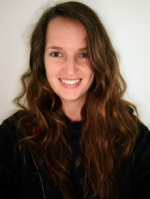
Project title: Understanding individual differences in sweet taste
Supervisors: Prof Martin Yeomans, Dr Darya Gaysina
Project description: Contrary to the pervasive view that sweet tastes are universally liked, recent behavioural data clearly show three distinct phenotypic liking patterns; extreme sweet likers, moderate sweet likers and sweet dislikers, found across populations in the UK, US and Asia. My PhD project focuses on understanding the genetic and neural basis of individual differences in liking for sweet tastes as a marker of risk for the development of obesity and consequent type-2 diabetes. Interdisciplinary in nature, this project will utilise methods from genetics, psychology, nutrition, and neuroscience such as body composition analysis, fMRI and genetic association studies.
George Kafetzis (School of Life Sciences) 
Project title: Vision at the origin of vertebrate life
Supervisors: Professor Tom Baden
Project description: Despite the mass species diversification early during the Cambrian explosion and the occurring wide range of eye shapes and sizes, the basis of retinal vision of all vertebrates is strikingly based on the same motif. However, owing to the pervasive dominance of but a few model species in neuroscience research, we have scarce knowledge and understanding of the computations performed in retinas of non-model species, which make up the vast majority of vertebrates living on the planet today. By exploiting bleeding-edge high-throughput physiological, anatomical and genetic tools, we seek to functionally characterize the visual circuits that existed at the beginning of vertebrate life itself, found today in living fossils such as lampreys and sharks. This will not only allow us to contextualise existing knowledge of retinal function and visual encoding, but will shed light on structural and computational constraints, evolutionary imposed on the visual circuits.
Tomasz Korbak (School of Engineering and Informatics) 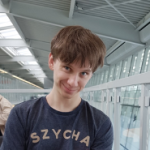
Project title: Scaling active inference
Supervisors: Dr Christopher Buckley, Professor Anil Seth
Project description: Active inference is a modelling framework in computational neuroscience and machine learning built around the assumption that cognitive systems encode hierarchical generative models of their environments and minimise prediction errors of these models. This framework suggests that complex goal oriented behaviour can emerge when perception, action and learning are cast as the optimisation of a functional known as the expected free energy. The goal of this project is to build robust implementations of active inference that scale up to complex partially-observable simulated environments used in modern deep reinforcement learning research. To that end, I will utilise recent advances in deep learning and vibrational inference as well as explore powerful ideas such as control as inference, hybrid inference, intrinsic motivation and representation learning.
Federico Micheli (School of Engineering and Informatics) 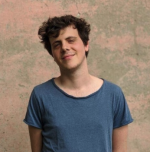
Project title: Dissociating Top-Down and Bottom-Up Brain Processes in Conscious Perception
Supervisors: Professor Anil Seth, Dr Chris Buckley
Project description: Predictive coding is a proposed model which provides a key principle explanation for many high cognitive functions such as perception, interoception and attention. In particular, it makes strong hypotheses regarding the directions of information flows between brain areas along the cortical hierarchy. I will be exploring the main direction and locus of cortical electrophysiologic signals under different perceptual situations (e.g. expectation and attention), in order to test specific hypothesis on cortical functioning and organization.
Jonathan Reus (School of Media, Arts and Humanities) 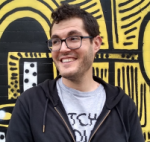
Project title: Alien Umwelts: The Perception of Otherness in the Aesthetics of Artificial Intelligence Systems
Supervisors: Professor Thor Magnusson, Professor Andy Clark
Project description: Artistic, practice-driven research project into aesthetic techniques based in a neuroaesthetics of "otherness" in AI generated art. Drawing concepts and techniques from the humanities, philosophy of mind, psychology, robotics and neuroscience. The research will attempt to develop interdisciplinary artistic works based at the intersection of art, science and culture.
Mikkel Roald-Arbol (School of Life Sciences) 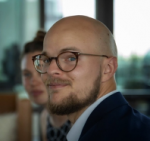
Project title: Neural underpinnings of invertebrate sleep
Supervisors: Professor Jeremy Niven, Dr Chris Buckley
Project description: When animals sleep they exhibit distinct behavioural signatures and patterns of neural activity. However, little is known about what goes on in the invertebrate brain during sleep. As a results, the focus of this project is on exploring how global neural activity changes between sleep and awake states in an insect, the ant. Ants are reported to have hundreds of sleep epochs each day, making them a powerful model system for this project as they exhibit frequent sleep/wake phase transitions.
Will Roseby (School of Life Sciences) 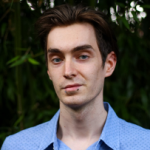
Project title: A genetic approach to sensory neuroscience
Supervisors: Professor Claudio Alonso, Professor Thomas Nowotny
Project description: The function of sensory neurons is finely modulated by a wealth of small molecules such as micro RNAs, but many of these remain undiscovered. This project will employ molecular biology techniques to elucidate the role of such molecules in specific sensory neurons of the model organism, the fruit fly Drosophila melanogaster. Computational neuroscience methods will subsequently be used to characterize Drosophila sensory circuits, incorporating molecular and genetic information to enhance the accuracy of the resultant models.
Nadine Spychala (School of Engineering and Informatics) 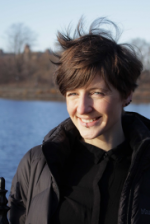
Project title: Measures of neural complexity and emergence related to conscious processing
Supervisors: Dr. Adam Barrett, Professor Anil Seth
Project description: Complexity measures operationalize the idea that a system is both segregated (parts of the system act independently) and integrated (parts behave as one). Such measures have been probed for their ability to differentiate states of consciousness on the grounds that they also display a balance of integration and segregation. Their success stories, however, vary substantially. The present project will bring into play the concept of emergence, which denotes a property occurring only in a collection of elements forming a system, but not in the individual elements themselves, and investigate how it may inform an account of differences in consciousness.
Beata Wozniak (School of Psychology) 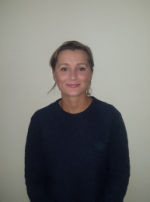
Project title: Investigating cues to colour constancy using virtual reality
Supervisors: Dr Jenny Bosten, Professor Anna Franklin
Project description: The visual system can compensate for small changes in the spectral illumination to retain relatively stable colour appearance of objects. To achieve colour constancy, the system needs to estimate and reverse the changes in the illumination. By manipulating individual cues in complex, virtual environments (e.g. depth information, specular highlights, average chromaticity), we wish to identify the type of information needed for colour constancy and the illuminant transform.
Cohort 2
Clémence Compain (School of Engineering & Informatics) 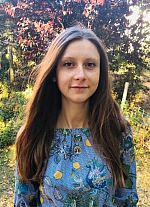
Project title: Perceptual biases and metacognition during visual decision-making
Supervisors: Professor Anil Seth, Dr Maxine Sherman
Project description: Humans have the ability to be aware of their own performance, an ability called metacognition. It is generally evaluated by a retrospective confidence judgment about the belief that the choice made is correct. Confidence judgments emerge from both sensory evidence and internal noise, reflecting the quantity and the quality of perceptual information. However, perception can be biased by prior beliefs and knowledge about the world. My research aims to investigate the awareness of humans’ objective and metacognitive biases, and the influence of the biases’ awareness on subsequent choices and on confidence about these choices.
Fiona Miller (School of Media, Arts and Humanities) 
Project title: Towards a therapeutic compositional model: can attributes of sound and music be isolated and composed to induce optimum HRV in PTSD sufferers?
Supervisors: Dr Alice Eldridge, Professor Hugo Critchley
Project description: The purpose of this project is to determine whether attributes of sound and music can be manipulated to induce parasympathetic autonomic nervous system activity, with the aim of constructing a framework for creating musical compositions that induce optimum heart rate variability among sufferers of post-traumatic stress disorder.
Isabel Maranhão (School of Life Sciences) 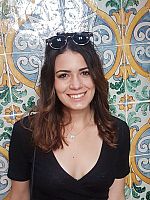
Project title: Sequence processing in dyslexic and non dyslexic groups
Supervisors: Professor Miguel Maravall, Dr Warrick Roseboom
Project description: This project will explore how we recognise sequences; stimuli that unfolds over time in a in a particular order. What are the global and local cues we use for sequence discrimination? To achieve this, auditory and tactile sequence processing in dyslexic participants, which potentially show an impairment in sequence processing, and non dyslexic participants will be compared using behavioural and electrophysiological experiments. This project also aims to draw parallels in sequence processing between mice and humans.
Jacopo Modoni (School of Psychology) 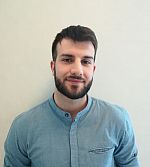
Project title: Putting the spotlight on taste: behavioural and optical interrogation of the neural mechanism of hedonic taste perception
Supervisors: Dr Eisuke Koya, Dr Hans Crombag
Project description: Cues that predict the availability of food are able to trigger the motivational drive to consume palatable, and often times unhealthy foods. In some individuals, exposure to these cues trigger reactions such as food cravings and excessive food intake which contributes to unhealthy eating.
Within the wider appetitive and motivational neuronal network, the nucleus accumbens (NAc) serves as a key node in establishing learned associations between the hedonic (pleasurable) and incentive properties of food and the cues that predict food availability.
In this project, using fibre photometry I will examine how NAc neurons are activated during consumption of palatable foods and exposure to associated cues following modulation of the hedonic value of food. By doing so we will be able to reveal the relevant neuronal activity patterns that have relevance for both normal and unhealthy eating.
Sam Bilbow (School of Media, Arts and Humanities) 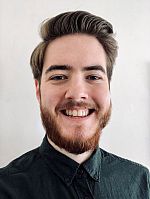
Project title: Impact on human perception and expression, using augmented-reality technology as a medium for installation art
Supervisors: Dr Chris Kiefer, Dr Cecile Chevalier, Professor Jamie Ward
Project description: There has been a surge in the development of augmented reality (AR) due to its growing implementation in consumer technologies. However, development has mainly focused on augmenting the visual sense, which has led to a relatively under-explored area - multisensory AR. This research project will investigate the impact on perception and expression, both individual and shared, when using AR technology as medium for creating interactive multi-sensory art. The aim of my research is to support computational artists by developing a deeper understanding of the materiality of this medium.
Sina Dominiak (School of Life Sciences) 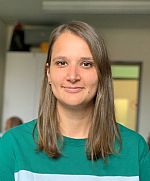
Project title: Plasticity of visual processing in primary visual cortex
Supervisors: Professor Leon Lagnado, Professor Miguel Maravall
Project description: Perceptual responses to sensory signals change depending on stimuli, context and behavioural state. I will investigate the circuit mechanisms that modulate the processing of sensory signals in the primary visual cortex. The focus will be set on the role of inhibitory interneurons controlling changes in the gain of visual responses that are associated with short-term changes in behavioural state as well as long-term changes during learning.
Tessa Herzog (School of Life Sciences) 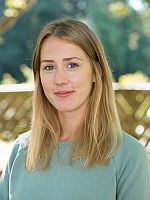
Project title: Information encoding at the first visual synapse in the visual pathway
Supervisors: Professor Tom Baden, Professor Leon Lagnado
Project description: The cone photoreceptors in the outer layer of the retina have the task of encoding visual information and transmitting it across the first synapse of the visual pathway. Ultimately, this enables us to perceive features including contrast, luminosity and colour.
How do ribbon synapses of cone photoreceptors recode the graded voltage signals generated in the outer segment for transmission to post-synaptic neurons? Using zebrafish, we are investigating how synaptic vesicles are used to encode luminance and contrast by imaging glutamate release in vivo. I will focus on comparing information encoding in red, green, blue and UV cones, and across different positions in the eye.
Cohort 1
Carla Dance (School of Psychology) 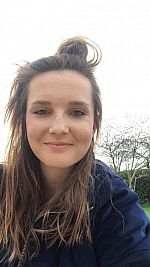
Project title: A ‘blind mind’s eye’: Visual Knowledge in aphantasia
Supervisors: Professor Julia Simner
Project description: For most people visual imagery contributes pivotally to every day experience. Congenital aphantasia is the inability to visually image from birth. The present research project will investigate the implications of aphantasia for domains such as cognitive processing style, perception, sensory imagery, sensory sensitivity, and experience of anxiety. This will further the characterisation of aphantasia, vital in progressing our understanding of this newly acknowledged condition.
Dennis Larsson (Brighton and Sussex Medical School, BSMS) 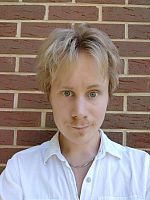
Project title: Body-brain interaction underlying metacognitive awareness
Supervisors: Dr Sarah Garfinkel, Professor Zoltan Dienes
Project description: How interoceptive signals from the internal body and its visceral organs (e.g. the heart and the stomach) relate to changes in brain activity; and how such signals relate to metacognitive awareness of interoceptive activity.
Filippo Torresan (School of Engineering and Informatics) 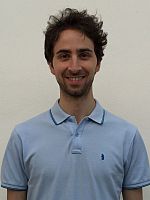
Project title: Representations and Conscious Content in the Predicting Brain
Supervisors: Dr Ron Chrisley, Professor Anil Seth
Project description: A long-standing tradition in cognitive science conceives of thought and related mental processes as involving mental representations. In my research, I investigate what notions of mental representation are consistent with predictive processing, a neuroscientific framework describing the activity of the brain as one of relentless prediction directed both inwards and outwards. In particular, I am interested in exploring the constraints that predictive processing imposes on how mental representations turn into conscious experience.
Joshua Hargreaves (School of Media, Arts and Humanities) 
Project title: A bio-psycho-social exploration into the role of musical leadership to facilitate and guide socio-temporal synchrony
Supervisors: Dr Thor Magnusson, Professor Anil Seth
Project description: I will be exploring the role of ‘leadership’ and ‘influence’ in musical interactions, and how this role manifests in order initiate and guide the neural, bodily and social synchronisations that make human musicality possible, and which may have great implications in many other aspects of human sociality. The fundamental principle in this bio-psycho-social perspective of leadership is not one of power or superiority, but about influence and empowering others. Music provides an excellent example of this, as the outcome of all musical interactions is to reach some kind of auditory, physical, emotional and social synchrony.
Magdalena del Río (School of Psychology) 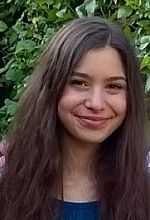
Project title: Individual Differences in Sensory Sensitivity and its Links to Autism and Synaesthesia
Supervisors: Professor Jamie Ward, Dr Sophie Forster, Dr Jenny Bosten
Project decription: Why do some people experience certain simple sensory stimuli as intense or overwhelming? How is this hypersensitivity linked to clinical conditions, and what is its neural basis?

